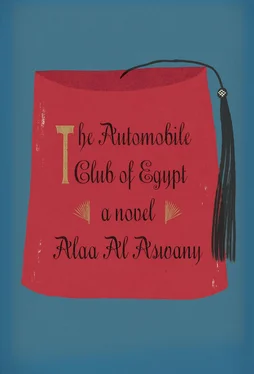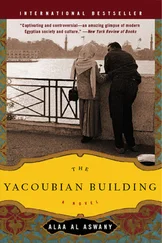Then it was the turn of the cooling system to break down: the water ran out, and the engine became red hot. Bertha turned it off and, leaving the boys behind in the carriage again, set off on foot with Karl’s special rubber can to find a public tap in the park. She hoped that would be the last disaster, but it was far from it. The car soon shuddered to a halt again. Bertha got out and discovered that the carburetor was blocked. After a few moments’ thought, she took out one of her hairpins and, with the tenacity of an ant, used it to give the carburetor mesh a good poking. But this time when she tugged on the drive belt again, the motor did not respond. She pulled it again and again before it finally started turning, and the carriage set off. Ten full hours later, during which all sorts of problems and delays had occurred and after bouts of hopelessness, frustration and despair, Bertha drove the Benz carriage into the town of Pforzheim. Before going to her mother’s house, she stopped at the telegraph office. In her haste, she left the engine running and ran in to send the following telegram to her husband, “Today, the Benz carriage has traveled over a hundred kilometers from Mannheim to Pforzheim. Karl, we have done it. We are proud of you.”
The following day, Bertha drove the carriage back to Mannheim. Profiting from the previous day’s mistakes, this time she brought a large pitcher of water and a number of bottles of gasoline. She borrowed needles from her mother for unclogging the carburetor. All these preparations cut two whole hours from the journey. Words cannot describe the state Karl was in when Bertha and the children got home. He was standing in front of the house, and as soon as the carriage appeared in the distance, he started calling out and clapping. When Bertha proudly stepped down from the carriage, he rushed over to hug her and shower her with kisses. Karl would write in his diary, “At some point I was so alienated from everyone that I started to doubt the value of what I was doing. But one person’s faith in me never wavered. One person who deserves the credit for everything I achieved. My wife, Bertha.”

The news from Mannheim and Pforzheim spread all over Germany and then to Europe and the world beyond. Karl Benz was soon flooded with offers, and he started manufacturing automobiles, slowly and cautiously at first, but then he began churning them out. A large part of public opinion was still fundamentally opposed to his invention, whether out of religious scruples or ignorance or because of the noise and smoke that the vehicles produced. Some, especially in the countryside, would run along behind the automobile, swearing at the driver, throwing rocks or hurling enormous tree stumps in its way. Those were the last desperate efforts in a battle whose outcome had already been decided.
Automobiles started to spread at an astonishing rate. On September 13, 1899, the first automobile fatality occurred. An American man named Henry Bliss was crossing the street in New York City when an automobile ran him over, crushing his skull. His death engendered real fears and a far-reaching controversy about the dangers posed by the new invention, but popular enthusiasm for it did not die down.
A great leap forward was made by the American Henry Ford, who started mass-producing cars. His strategy was to reduce the profit margin but increase the volume of production and sales. This was based on a simple conviction — that the employees of his own factory should be able to afford an automobile. And so the automobile went from being a toy for the rich to an accessible means of transport that changed people’s lives and way of thinking completely. Great distances were no longer daunting. An automobile owner could work far away from home; he could take his family to the beach and have them home in the same day. The automobile established man’s sense of independence and individuality and confirmed him as master of his own destiny.

Egypt, at that time under British occupation, was no different. In 1890 Egyptians saw their first automobile. It was a French De Dion-Bouton, imported by Prince Hassan, a grandson of Khedive Ismail, who loved adventure and innovation. He exposed himself to great danger when he drove his automobile, with two friends in it, from Cairo to Alexandria along an unpaved agricultural road. The trip took ten whole hours and cost a fortune, as the vehicle damaged many fields of crops and hit quite a few cows and donkeys. The prince handed out cash to the peasants on the spot. Egyptians fell in love with the automobile. In 1905 there were 110 in Cairo and 56 in Alexandria. By 1914 Egypt had imported 218 automobiles. The ever-increasing numbers proved the need for an automobile club to deal with all related necessities, such as issuing licenses, surfacing roads, setting speed limits and creating driving instruction and vehicle maintenance manuals. After repeated efforts over the course of twenty years, the Royal Automobile Club officially opened in 1924.
The Club’s founders were all foreigners or members of the local Turkish aristocracy. The first chairman was Prince Omar Toussoun, and King Fuad consented to be the patron. Elections were held for the administrative committee, and an Englishman, James Wright, was appointed managing director. Everything was done to make it a carbon copy of the famous Carlton Club in London. The building itself was an architectural jewel of traditional elegance.
When the administrative committee sat down to draw up the Club’s rules and bylaws, two problems arose. First: Should the Club allow Egyptians to become members? This idea was rejected by a majority, led by the Englishman Mr. Wright, who declared, as he lit his pipe, “I should like to make clear that our job in this Club is to ascertain a policy for automobiles in Egypt. Egyptians in general, even if they are wealthy and educated, are not qualified to make such decisions. The automobile is a Western invention, and it is Westerners alone who should decide policy. I don’t expect Egyptians to do more than buy them and ride in them.”
After many frank expressions of opinion, an Italian member who spoke Arabic warned them that they were in danger of raising a stink in the Egyptian press, which in turn would affect automobile sales in Egypt. He said, “National sentiment in Egypt is inflamed against the British occupation. At any moment this sentiment could change into xenophobia and the declaration of a commercial boycott. We don’t want that. I think we all want to see Egyptians buying more and more automobiles.” The words reverberated in the boardroom, and other members took heed.
After a long discussion, the committee members agreed to accept Egyptians provided that they could furnish letters from two members of the administrative committee to second their applications for membership. Foreigners who provided proof of automobile ownership would receive membership automatically. Thus the committee could prevent Egyptians from becoming members, inasmuch as was possible, in a manner that would not provoke public resentment.
The other issue was that of the staff. The committee members naturally hoped to employ Europeans. When they studied the matter, however, it became clear that the cost of employing foreign staff would be astronomical. Facing this insurmountable problem, some committee members suggested staffing the club with Egyptians.
“They’re dirty. Stupid. Filthy. Liars and thieves.” These words were spoken by a French committee member, but they expressed the opinion of the majority.
Читать дальше













